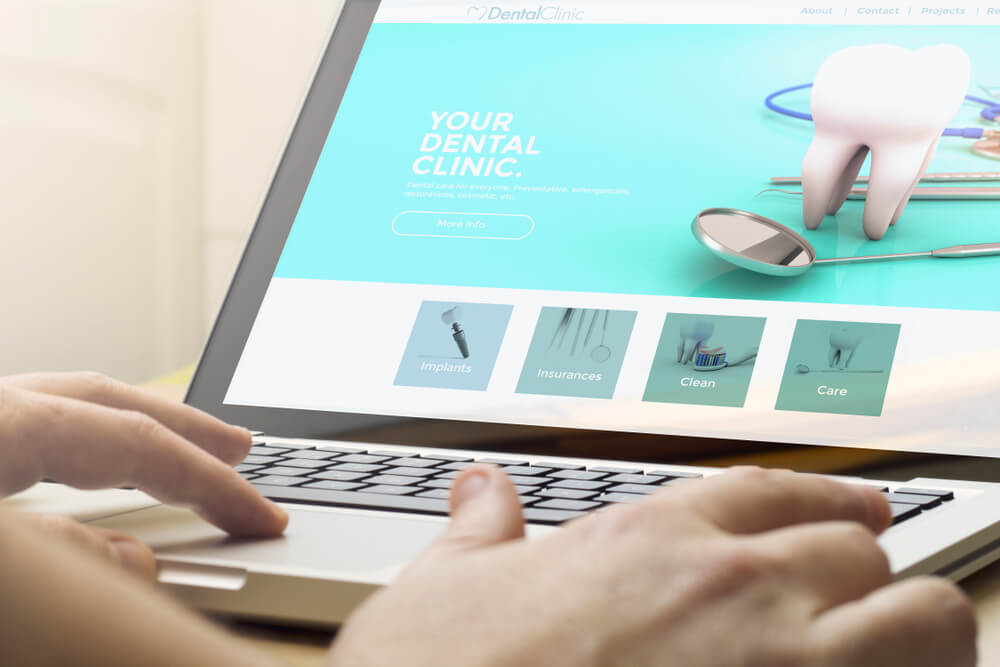
Avoid or Fix These 7 Most Common Dental Website Mistakes
Building a good website is harder than Squarespace and Wix make it seem. Templates are safe, but critical design or SEO errors can bring them down. Always be alert to these errors and rush to fix them.
This article discusses the following mistakes in website development for dentists:
- Lack of engaging content
- No valuable or original content
- Missing or hidden contact information
- Not optimized for local ranking
- Not compliant with HIPAA rules
- Lack of vital branding elements
- Not in line with ADA standards
There’s a lot to discuss, so get ready to take notes.
Let’s go!
To learn how Digital Authority Partners can create a standout website for you, watch this video!
1. Lack of Engaging Content
A business website’s design is often subject to the shifting needs and wants of the owner, and it can suffer as a result. For instance, many websites exist solely for the purpose of being tied to businesses. They have little to no content to fill their pages and none to draw new leads.
Lack of meaningful content is a problem because this is one of the biggest factors where putting in some focused effort can make a difference in website development for dentists. Therefore, there should be no excuse for making such a basic mistake that costs your business in terms of lost leads.
Content is just as crucial to the website strategy of a dental practice as it is to that of a flower shop, especially materials that engage the target market, such as videos and quizzes. Another way to get more traffic is to start a blog and get creative with topics. Aim to provide value and help solve problems.
2. No Valuable or Original Content

Although you need content to engage people in your target market, that does not mean posting for the sake of posting is acceptable. A fundamental fact in (technical) SEO is that duplicate content (having the same material on more than one page of the site) or copied content is low quality and hurts your rank in search results. It is a cheap tactic that does not deliver results.
You also have every reason to create original content. It makes your dental practice more valuable and recognizable to your target market. It also helps with brand building and marketing, which add credibility and brand awareness.
As a rule of thumb, follow Google’s experience, expertise, authority, and trustworthiness (E-E-A-T) rating guidelines regarding the type of content your audience will find useful. Of course, as medical practitioners, dentists should not make any claims that are unsupported by evidence or mislead patients in any way.
3. Missing or Hidden Contact Information
Many business owners commit rookie mistakes the first time they create a website, making design decisions that focus on looks rather than functionality. That is understandable because your website reflects you and your business, and you want to present a polished image. However, it is crucial to include certain elements.
One of these is making your business’s contact information obvious throughout the site. Do not think that once you set up a contact page, your name, address, and phone number are where they need to be on your website. Make it easy to get the information from every single page of the site.
For instance, put your contact info in a banner at the top of the page for quick access. If you have other locations, create a local page for each one and add them to a dropdown menu. You can also do more and add your contact info to call-to-action (CTA) buttons or survey forms so people can see it.
4. Not Optimized for Local Ranking
Another area that most dentists and local business website owners leave subpar is their local SEO. Although general SEO does help your business to some extent, for a business that draws from a limited geographic area like a dental practice, local SEO is more important. As the name implies, it is a set of practices that help you optimize local traffic.
In other words, local SEO helps your site appear higher up in results when people search within your area. You have a lot of competition in your locale alone, so local SEO is the best and most logical place to start fixing your website. A higher rank means more online traffic, after all.
You can optimize your local rank by using more targeted keywords in your content and your metadata tags, title, and headers. Local SEO keywords are essential for repairing flaws in your website strategy. Consider using them in more content throughout the site for better search ranking.
5. Not Compliant With HIPAA Rules

Like all healthcare practitioners, dentists are responsible for managing protected health information (PHI). A dental practice does not need to have telehealth consultations to potentially run afoul of the Health Insurance Portability and Accountability Act of 1996 (HIPAA).
For instance, if someone submits their name, email address, and concerns to you via your web scheduler or Google Forms, the personally identifiable information you receive constitutes PHI. HIPAA strictly prescribes responsible storage of this sensitive data.
In fact, some content management software (CMS) and customer relationship management (CRM) tools are defined by their HIPAA compliance. Take the time to learn how HIPAA applies to your website and what you should do to remain compliant, especially with regard to security — and make sure all clinic staff understand how to avoid violations.
6. Lack of Vital Branding Elements
An essential element of SEO is consistency — in your upload schedule, content quality, citations, and many more aspects. The core of consistency is keeping your brand identity the same in everything you do online by, for instance, adding your logo to all pages and having a consistent style.
Inconsistency in branding, or even the complete absence of branding, often crops up when you tackle website development for dentists as a do-it-yourself project. Actively managing a website is necessary to keep it up to date, and this takes more time than most dentists have on their hands. However, improperly managing the site can seriously hurt your brand strategy.
Branding is in everything you do, and each instance must send the same message to your target clients. Your social media, website, and business profiles (Google My Business, etc.) should all project the same image to your target market. This helps you build rapport with your market.
7. Not in Line with ADA Standards

HIPAA and SEO are not the only guidelines that help or hinder a website. The Americans with Disabilities Act (ADA) is a set of laws that govern how private businesses deal with access and usability issues. Just as a physical location must make changes that let wheelchair users access the space, a website must adopt certain standards to give everyone equal access.
For instance, all images need alt-text descriptions so that people with low or no vision can access them. Likewise, any video or audio will need closed captioning.
Although you may not actually face any legal penalties for an inaccessible dental website, adhering to the ADA’s rules is vital to your business because it profoundly affects the user experience (UX). About 88% of users do not return after a bad experience, so alienating any part of your target market is a bad move for your dentistry practice.
Summing Up
To do SEO right, you should fix avoidable website mistakes when you become aware of them. Common ones, such as missing or subpar content strategies, are easy to fix. However, more complicated elements, such as website design, call for expert help.
Need help fixing your dental website? Contact Digital Authority Partners to learn how we can help.
Want To Meet Our Expert Team?
Book a meeting directly here




